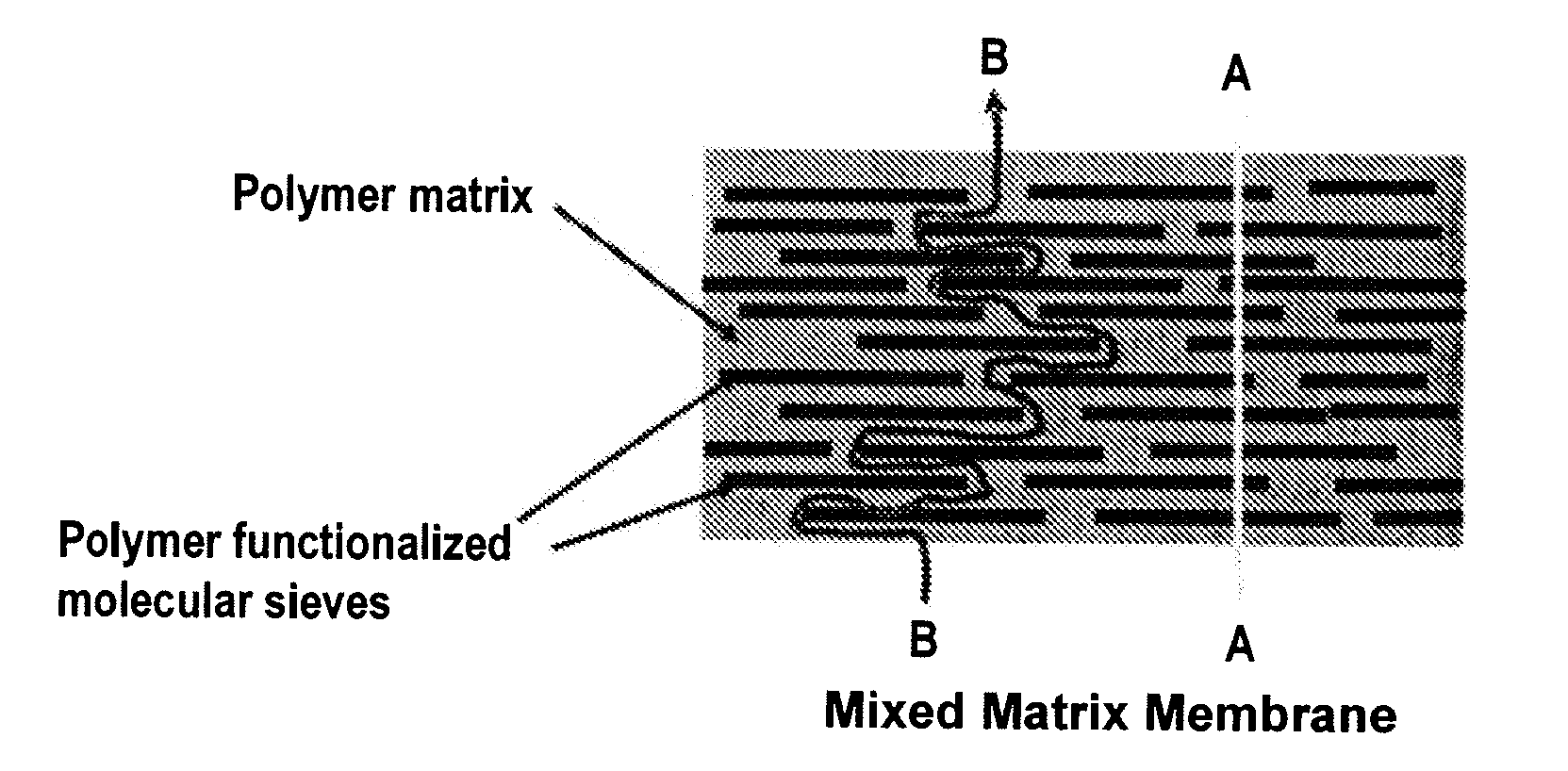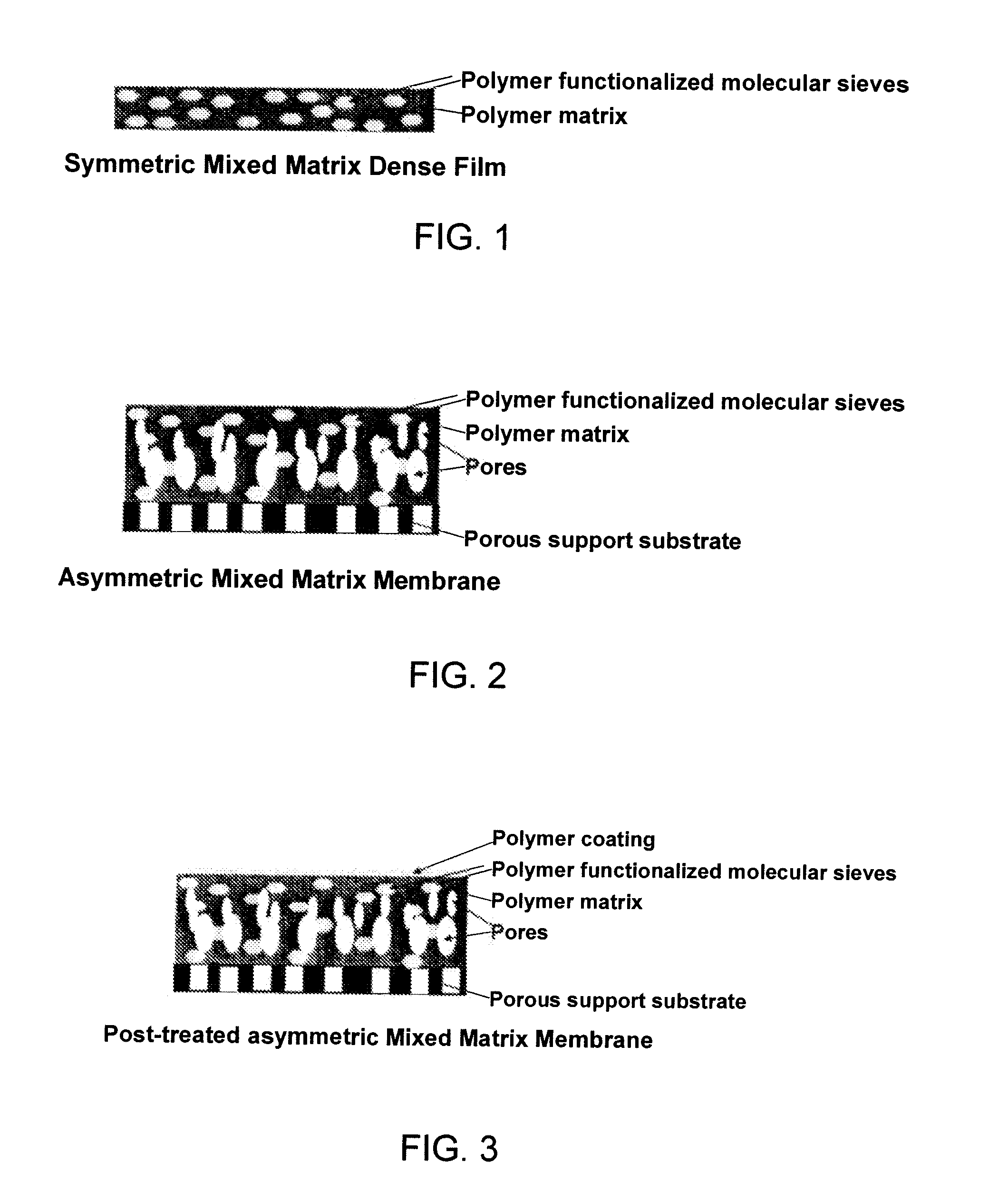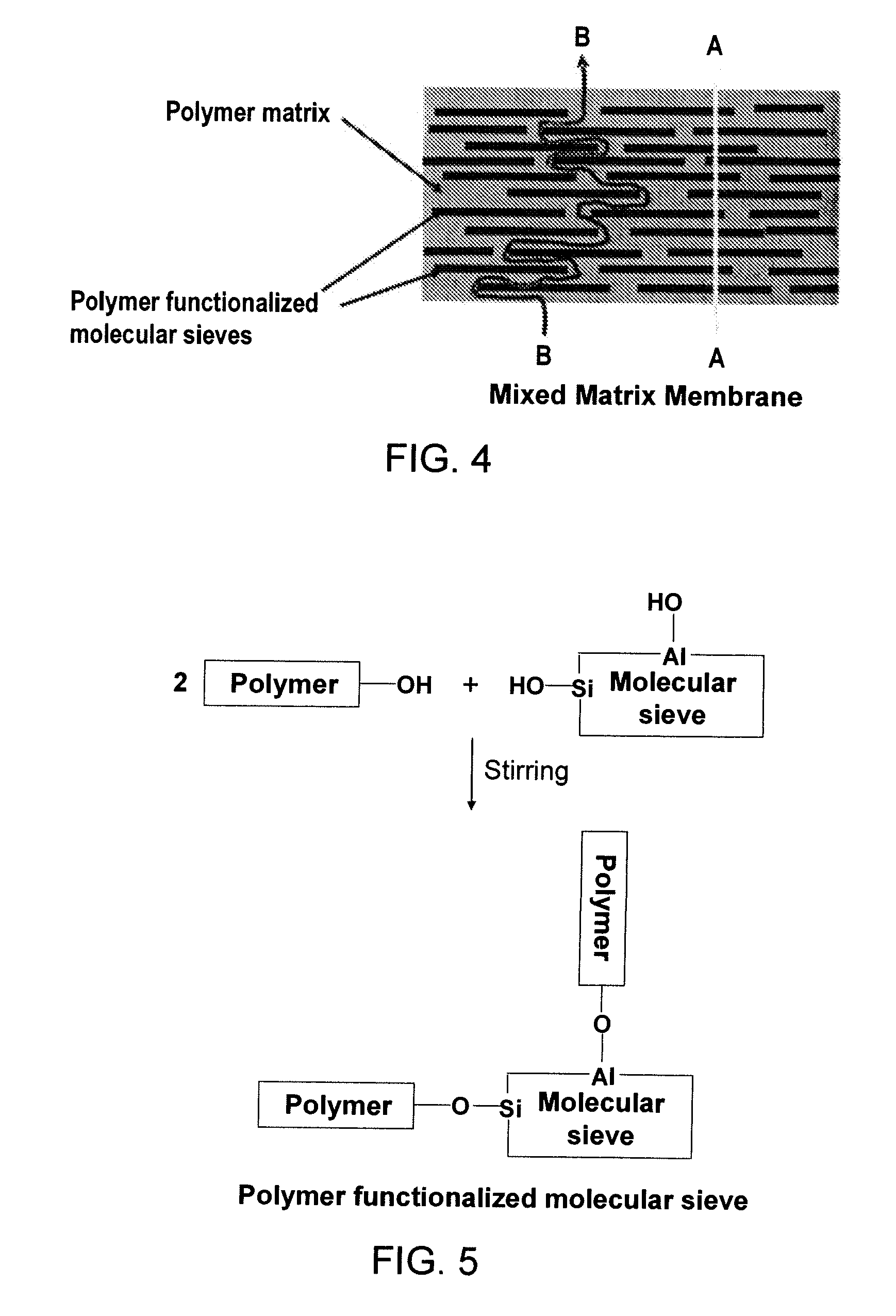Method of Making Polymer Functionalized Molecular Sieve/Polymer Mixed Matrix Membranes
a technology of molecular sieve and mixed matrix, which is applied in the direction of physical/chemical process catalysts, other chemical processes, separation processes, etc., can solve the problems of difficult large-scale manufacturing, low permeability of polymers, and current polymeric membrane materials that seem to have reached limits, etc., to increase the overall separation efficiency significantly, the effect of permeability and selectivity
- Summary
- Abstract
- Description
- Claims
- Application Information
AI Technical Summary
Benefits of technology
Problems solved by technology
Method used
Image
Examples
example 1
Preparation of “Control” poly(DSDA-TMMDA) Polymer Dense Film
[0077]7.2 g of poly(DSDA-TMMDA) polyimide polymer (FIG. 8) and 0.8 g of polyethersulfone (PES) were dissolved in a solvent mixture of 14.0 g of NMP and 20.6 g of 1,3-dioxolane. The mixture was mechanically stirred for 3 hours to form a homogeneous casting dope. The resulting homogeneous casting dope was allowed to degas overnight. A “control” poly(DSDA-TMMDA) polymer dense film was prepared from the bubble free casting dope on a clean glass plate using a doctor knife with a 20-mil gap. The dense film together with the glass plate was then put into a vacuum oven. The solvents were removed by slowly increasing the vacuum and the temperature of the vacuum oven. Finally, the dense film was dried at 200° C. under vacuum for at least 48 hours to completely remove the residual solvents to form the “control” poly(DSDA-TMMDA) polymer dense film (abbreviated as “control” poly(DSDA-TMMDA) in Tables 1 and 2, and FIGS. 13 and 14).
example 2
Preparation of 10% AlPO-14 / PES / poly(DSDA-TMMDA) Mixed Matrix Dense Film
[0078]A polyethersulfone (PES) functionalized AlPO-14 / poly(DSDA-TMMDA) mixed matrix dense film containing 10 wt-% of dispersed AlPO-14 molecular sieve fillers in a poly(DSDA-TMMDA) polyimide continuous matrix (10% AlPO-14 / PES / poly(DSDA-TMMDA)) was prepared as follows:
[0079]0.8 g of AlPO-14 molecular sieves were dispersed in a mixture of 14.0 g of NMP and 20.6 g of 1,3-dioxolane by mechanical stirring and ultrasonication for 1 hour to form a slurry. Then 0.8 g of PES was added to functionalize AlPO-14 molecular sieves in the slurry. The slurry was stirred for at least 1 hour to completely dissolve the PES polymer and to functionalize the outer surface of the AlPO-14 molecular sieve. After that, 7.2 g of poly(DSDA-TMMDA) polyimide polymer was added to the slurry and the resulting mixture was stirred for another 2 hours to form a stable casting dope containing 10 wt-% of dispersed PES functionalized AlPO-14 molecula...
example 3
Preparation of 40% AlPO-14 / PES / poly(DSDA-TMMDA) Mixed Matrix Dense Film
[0081]A 40% AlPO-14 / PES / poly(DSDA-TMMDA) mixed matrix dense film (abbreviated as 40% AlPO-14 / PES / poly(DSDA-TMMDA) in Tables 1 and 2, and FIGS. 13 and 14) was prepared using similar procedures as described in Example 2, but the weight ratio of AlPO-14 to poly(DSDA-TMMDA) and PES is 40:100.
PUM
| Property | Measurement | Unit |
|---|---|---|
| Temperature | aaaaa | aaaaa |
| Pressure | aaaaa | aaaaa |
| Particle size | aaaaa | aaaaa |
Abstract
Description
Claims
Application Information
 Login to View More
Login to View More - R&D
- Intellectual Property
- Life Sciences
- Materials
- Tech Scout
- Unparalleled Data Quality
- Higher Quality Content
- 60% Fewer Hallucinations
Browse by: Latest US Patents, China's latest patents, Technical Efficacy Thesaurus, Application Domain, Technology Topic, Popular Technical Reports.
© 2025 PatSnap. All rights reserved.Legal|Privacy policy|Modern Slavery Act Transparency Statement|Sitemap|About US| Contact US: help@patsnap.com



